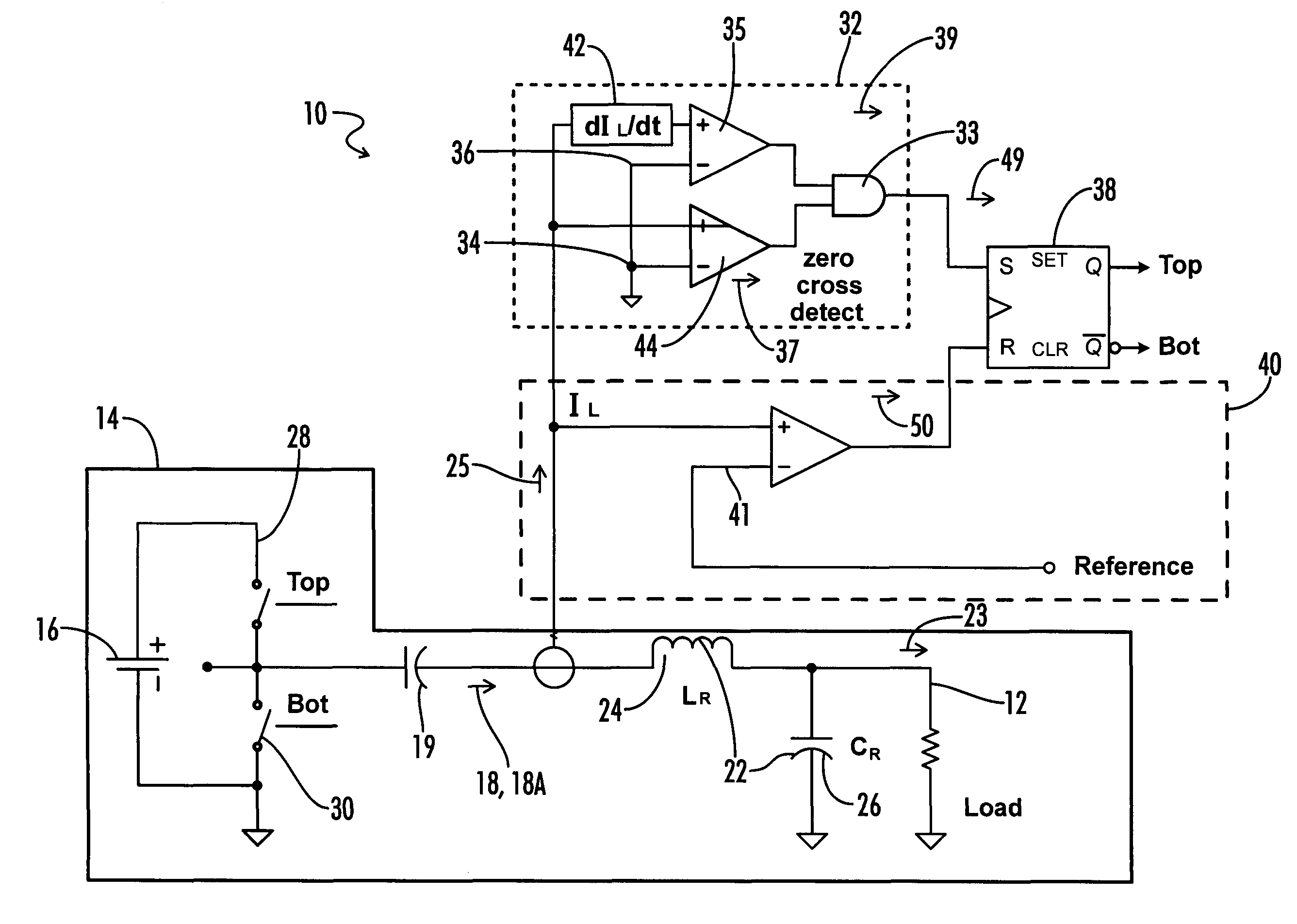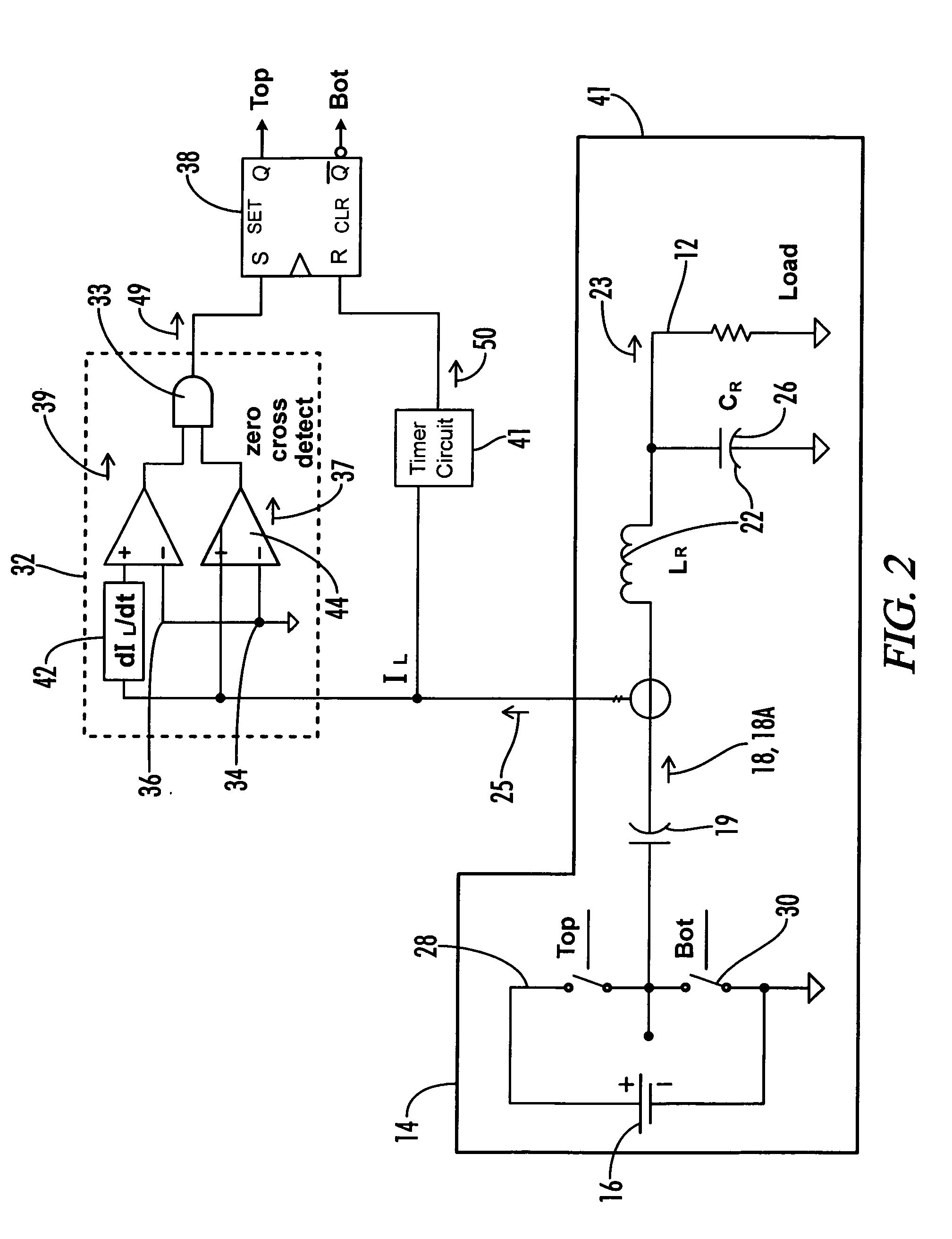Method of operating a resonant inverter using zero current switching and arbitrary frequency pulse width modulation
a resonant inverter and zero current technology, applied in the field of resonant inverters, can solve the problems of undesirable circulating current through the component, the use of frequency modulation to control the inverter output does not guarantee zero voltage switching, and the inability to operate as current sources. to achieve the effect of increasing the overall switching period
- Summary
- Abstract
- Description
- Claims
- Application Information
AI Technical Summary
Benefits of technology
Problems solved by technology
Method used
Image
Examples
first embodiment
[0016]the inverter circuit 10 of the present invention is shown in FIG. 1. The inverter circuit 10 is particularly useful when the load 12 is a gas discharge lamp. The preferred embodiment stabilizes the operation of the lamp by maximizing the open loop output impedance of the inverter circuit.
[0017]The inverter circuit 10 includes a half-bridge inverter 14 coupled to a DC source 16 and a series-resonant circuit 22. The inverter 14 and series resonant circuit 22 conventionally operate to convert a DC voltage from DC source 16 to a high frequency, high voltage AC current that is supplied to a load 12, such as a gas discharge lamp. In this embodiment, the inverter 14 is a driven inverter in which commutation of the top and bottom inverter switches 28, 20 is controlled by an inverter drive circuit.
[0018]A DC blocking capacitor 19 may be placed between the inverter 14 and the resonant circuit 22. The inverter output 18 may have varying time, frequency, and envelope characteristics depen...
second embodiment
[0030]In the inverter circuit 10 shown in FIG. 2, the on-time of the top inverter switch 28 is controlled by a timer circuit 41. The timer circuit 41 is preferably activated when the top inverter switch 28 is turned on. Thereafter, the second indicator signal 50 is generated after a time delay, causing the top inverter switch 28 to turn off. Preferably, and as shown in FIG. 3B, the time delay is synchronized so that the top inverter switch 28 is turned off at or near a peak current value for the AC current signal 25. As described above, the zero-crossing detector circuit 32 insures commutation at or near zero current crossing when the load current is increasing.
[0031]A graphical illustration of the operation of the inverter circuit 20 is shown in FIGS. 3A-3B. Referring specifically to FIG. 3A, the graph depicts the output 31 from the normal output Q of switching circuit 38. When the output 31 is low, top inverter switch 28 is turned off. When the zero crossing detector circuit 32 de...
PUM
 Login to View More
Login to View More Abstract
Description
Claims
Application Information
 Login to View More
Login to View More - R&D
- Intellectual Property
- Life Sciences
- Materials
- Tech Scout
- Unparalleled Data Quality
- Higher Quality Content
- 60% Fewer Hallucinations
Browse by: Latest US Patents, China's latest patents, Technical Efficacy Thesaurus, Application Domain, Technology Topic, Popular Technical Reports.
© 2025 PatSnap. All rights reserved.Legal|Privacy policy|Modern Slavery Act Transparency Statement|Sitemap|About US| Contact US: help@patsnap.com



